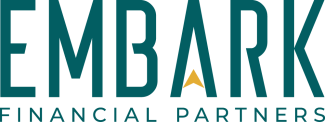
Roth vs. Traditional – Where Should You Be Investing Your Dollars?
Roth vs. Traditional – Where Should You Be Investing Your Dollars?
#TakeAction
Saving for retirement can be done individually, through your employer, or often a combination of both. The assets to select for investing in retirement can be broken down into two types, Roth and Traditional. Recognizing the features of these two options and how to evaluate them are critical to making the best decision for your retirement dollars.
| Roth Retirement Assets.
Roth means “after-tax,” which translates to the IRS has already taxed the dollars contributed into a Roth account. The primary advantage of a Roth account comes after age 59 ½. The general rule of thumb is the Roth account’s contributions and earnings can be withdrawn tax-free after age 59 ½ and if it’s been five years since the first Roth contribution. Roth accounts come in two forms, the Roth IRA and the Roth 401(k)/403(b). The Roth IRA takes individual contributions with a lower annual maximum ($6,000 or $7,000 if age 50 or older); whereas the Roth 401(k) and 403(b) are an employer-provided account allowing an employee to defer after-tax contributions out of their respective paycheck with a higher annual maximum ($20,500 or $27,000 if age 50 or older). [1]
| Traditional Retirement Assets.
Traditional/pretax retirement assets are those in which the IRS has not taxed the dollars contributed to the traditional account. The contributions and earnings in a pretax retirement account grow tax-deferred until withdrawal. The general rule to follow is to attempt to not withdraw these assets until surpassing age 59 ½. Pretax retirement assets include the traditional IRA but come in many more forms with the employer-provided options. The traditional IRA takes individual contributions and has the same annual maximum as Roth IRA ($6,000 or $7,000 if age 50 or older). It is important to note the annual maximum is aggregated between Roth IRA and Traditional IRA. The employer-provided pretax plans include traditional 401(k), 403(b), 457, SEP, SIMPLE IRA, and Pensions. The traditional 401(k), 403(b) and 457 have the same annual deferral maximums as the Roth options ($20,500 or $27,000 if age 50 or older). [2] These are also aggregated between traditional and Roth. The maximums for a SEP, SIMPLE IRA, and Pensions are all different depending on the plan so consult with your Embark Wealth Advisor or plan provider on these maximums.
| Making the Decision
Equipped with the understanding of the basic differences between Roth and Traditional, it is time for you to make the decision between the two.
- First, evaluate the retirement plan options at your employer. If your employer does not have a retirement plan, a Roth or Traditional IRA becomes the default option. If your employer does have a retirement plan, find out the type of plan, amount of employer match (if one exists), and deferral maximum. Not all employer retirement plans have a Roth option, so it is important to know the type of plan options available. Employer match amounts vary depending on the employer and the amount your employer matches can assist in calculating your appropriate retirement savings rate.
- Second, understand your current and projected Modified Adjusted Gross Income (MAGI) for the year. In most cases, your MAGI will influence the value of these plans in your retirement savings strategy. MAGI phaseouts exists for Roth IRA’s and can eliminate or reduce the ability to make Roth IRA contributions. With Traditional IRA’s, MAGI can eliminate deductibility of the IRA contributions if you are covered by an employer retirement plan. No MAGI limit exists for deductibility of contributions if you are not covered by an employer retirement plan.
- Third, give thought to your projected tax bracket in retirement. Projected retirement tax bracket helps with the Roth vs. Traditional decision. If you believe your tax bracket in retirement will be higher than your current tax bracket, Roth contributions are generally more beneficial today. Conversely, if you believe your tax bracket in retirement will be lower than your current tax bracket, Traditional contributions are generally more beneficial today.
- Fourth, many investors have built significant savings into their traditional retirement assets. An excess of these assets can cause significant tax burdens for you in retirement and for your beneficiaries after you pass them on. Shifting your savings to Roth or converting these assets to Roth can yield significant tax benefits for you and your loved ones.
An Embark Wealth Advisor can assist with finding the appropriate answers to all four factors and selecting the best location for your retirement assets based on your financial situation.
This information is not intended to be a substitute for individualized retirement advice. We suggest that you discuss your specific retirement situation with your financial advisor.
References
[1] “IRS Announces Changes to Retirement Plans for 2022.” Internal Revenue Service, IRS, 17 Nov. 2021, https://www.irs.gov/newsroom/irs-announces-changes-to-retirement-plans-for-2022#:~:text=Highlights%20of%20changes%20for%202022,IRAs%20remains%20unchanged%20at%20%246%2C000.
[2] Ibid.

